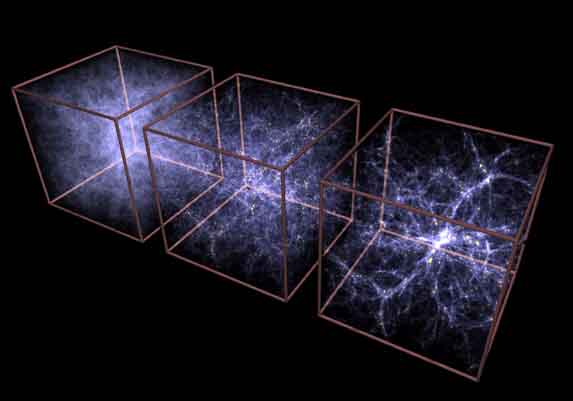

Dark Energy should not to be confused with Dark Matter or Dark Fluid.
In physical cosmology and astronomy, dark energy is an unknown form of energy which is hypothesized to permeate all of space, tending to accelerate the expansion of the universe. Dark energy is the most accepted hypothesis to explain the observations since the 1990s indicating that the universe is expanding at an accelerating rate.
Assuming that the standard model of cosmology is correct, the best current measurements indicate that dark energy contributes 68% of the total energy in the present-day observable universe. The mass-energy of dark matter and ordinary (baryonic) matter contribute 27% and 5%, respectively, and other components such as neutrinos and photons contribute a very small amount. The density of dark energy is very low much less than the density of ordinary matter or dark matter within galaxies. However, it dominates the massŠenergy of the universe because it is uniform across space.
Two proposed forms for dark energy are the cosmological constant, representing a constant energy density filling space homogeneously, and scalar fields such as quintessence or moduli, dynamic quantities whose energy density can vary in time and space. Contributions from scalar fields that are constant in space are usually also included in the cosmological constant. The cosmological constant can be formulated to be equivalent to the zero-point radiation of space i.e. the vacuum energy.Scalar fields that change in space can be difficult to distinguish from a cosmological constant because the change may be extremely slow. Read more
Dark Energy May Be Evolving: DESI Findings Shake Up Einstein's Theory Science Alert - March 20, 2025

Dark energy, the mysterious force thought to be driving the ever-faster expansion of the universe, appears to be changing over time, according to new observations.
New Study of Supernovae Data Suggests That Dark Energy is an Illusion Universe Today - January 2, 2025

Dark energy is central to our modern understanding of cosmology. In the standard model, dark energy is what drives the expansion of the Universe. In general relativity, itÕs described by a cosmological constant, making dark energy part of the structure of space and time. But as weÕve gathered more observational evidence, there are a few problems with our model. For one, the rate of cosmic expansion we observe depends on the observational method we use, known as the Hubble tension problem. For another, while we assume dark energy is uniform throughout the cosmos, there are some hints suggesting that might not be true. Now a new study argues weÕve got the whole thing wrong. Dark energy, the authors argue, doesnÕt exist.
Dark Energy May Not Exist: Something Stranger Might Explain The Universe Science Alert - January 3, 2025

There might not be a mysterious 'dark' force accelerating the expansion of the Universe after all. The truth could be much stranger Š bubbles of space where time passes at drastically different rates. The passage of time isn't as constant as our experience with it suggests. Areas of higher gravity experience a slower pace of time compared with areas where gravity is weaker, a fact that could have some pretty major implications on how we compare rates of cosmic expansion according to a recently developed model called timescape cosmology.
Discrepancies in how fast time passes in different regions of the Universe could add up to billions of years, giving some places more time to expand than others. When we look at distant objects through these time-warping bubbles, it could create the illusion that the expansion of the Universe is accelerating. Two new studies have analyzed more than 1,500 supernovae to investigate how likely the concept could be Š and found that the timescape model might be a better fit for observations than our current best model.
How Holographic Dark Energy Could Lead To The End Of The Universe IFL Science - October 23, 2024
A team looking into dark energy and the holographic principle have modeled what the end of the universe may look like, assuming that the universe is a hologram after all.
Simulation Theory - Holographic Universe
An Astrophysicist Reveals What Space and Outer Space Are Actually Made of Science Alert - September 3, 2024

Scientists predict that an as-yet unseen form of matter that does not emit light or energy, called dark matter, makes up a significant portion of the universe's mass. Researchers guess that it exists because they can see its gravitational pull on other visible matter. Imagine the universe as a balloon. Dark matter is like the balloon's material, affecting its shape, while dark energy is like the air being pumped into it. It doesn't change the balloon's material, but it influences how quickly the balloon expands.
Euclid space telescope: The groundbreaking mission to study dark matter and dark energy Live Science - July 6, 2023
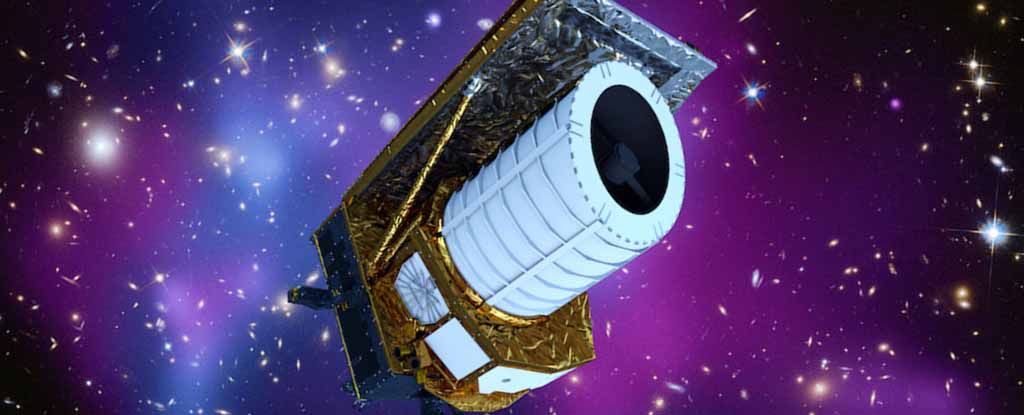
The Euclid space telescope uses its incredibly wide field of view to hunt for two of the universe's most mysterious components: dark matter and dark energy.
Supernova Explosions Reveal Precise Details of Dark Energy and Dark Matter SciTech Daily - October 26, 2022
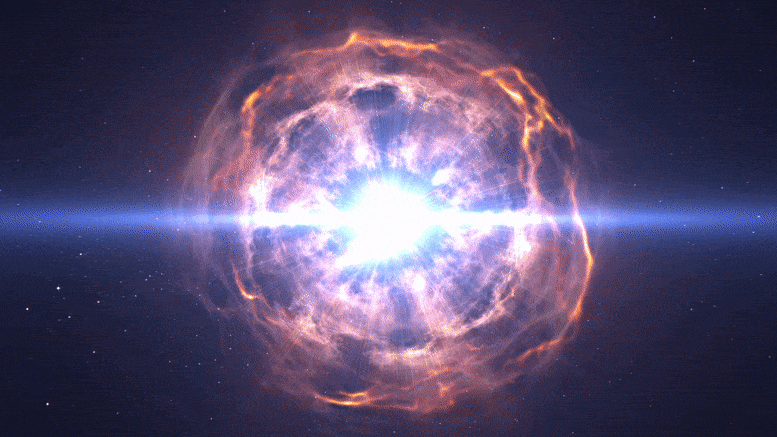
An analysis of more than two decadesÕ worth of supernova explosions convincingly boosts modern cosmological theories and reinvigorates efforts to answer fundamental questions. A powerful new analysis has been performed by astrophysicists that places the most precise limits ever on the composition and evolution of the universe. With this analysis, dubbed Pantheon+, cosmologists find themselves at a crossroads.
The Universe is a simulation that expanded (spiraled out) at the beginning - stopping after it was created and reversing ever since. We are currently at 0,1 in the sequence - almost home.
In physics, quintessence is a hypothetical form of dark energy postulated as an explanation of the observation of an accelerating rate of expansion of the universe. Continue reading ...
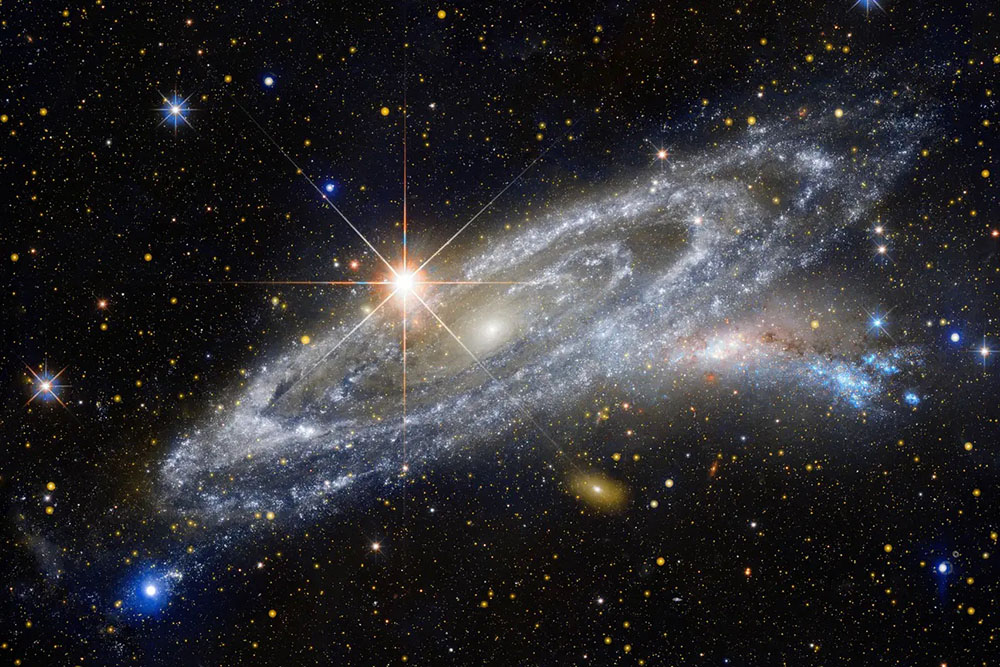
Predicting how soon the universe could collapse if dark energy has quintessence
PhysOrg - May 5, 2022
The Universe Could Collapse On Itself A Lot Quicker Than We Were Expecting
Unilad.co.uk - May 5, 2022
The universe could stop expanding 'remarkably soon'
Live Science - May 6, 2022
If the universe is expanding like a rubber band - when it snaps back will it collapse into itself?
'Chameleon Theory' Could Explain Why the Universe Is Blowing Up Live Science - July 12, 2019
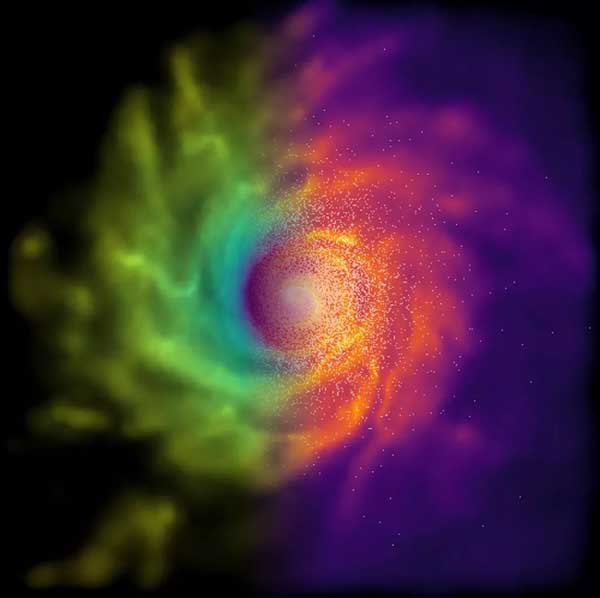
Can a chameleon build a galaxy? According to new computer models, yes. This isn't a surrealist joke but rather the implication of recent simulations that aim to explain the inner workings of dark energy, a mysterious force that is driving apart everything in the universe. The findings, published July 8 in the journal Nature Astronomy, lend support to a model of dark energy known as Chameleon Theory. Hints of dark energy were first discovered in the late 1990s, when cosmologists measured the light from distant supernovas and realized that the stars were dimmer than expected, suggesting that the fabric of spacetime was not only expanding, but accelerating in its expansion. Physicists proposed the existence of a force that worked in opposition to gravity, pushing things away from one another, rather than pulling them together.
Dark Energy Gets Weirder: Mysterious Force May Vary Over Time Space.com - January 30, 2019
Dark energy is apparently even more mysterious than astronomers had thought. Scientists first proposed the existence of this invisible force two decades ago, to explain the surprising discovery that the universe's expansion is accelerating. The most-used astrophysical model of the universe's structure and evolution regards dark energy as a constant. Indeed, many astronomers believe it to be the cosmological constant, which Einstein posited in 1917 as part of his theory of general relativity. But a new study of enormous, superbright black holes known as quasars suggests that dark energy could be miscast as the cosmological constant, or any kind of constant; the force may have varied since the universe's birth 13.8 billion years ago, research team members said.
Researcher finds hint of dark energy discussion in letters between Einstein and Schrodinger PhysOrg - December 11, 2012
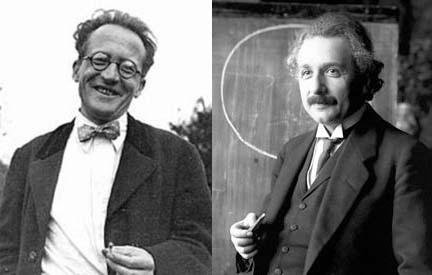
Alex Harvey, a physics professor at the City University of New York has uploaded a paper in which he claims Albert Einstein and Erwin Schrodinger were writing letters suggesting the two men were on the precipice of discussing the possibility of the existence of dark energy. The letter exchange came in the years after Einstein had published his theories on general relativity, and revolved around the matter of the cosmological constant.